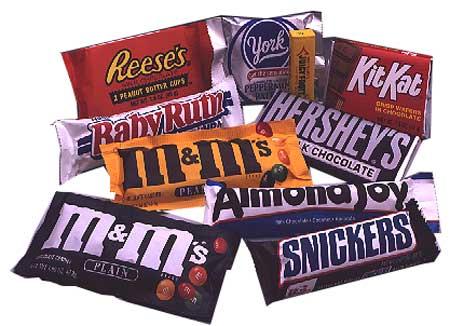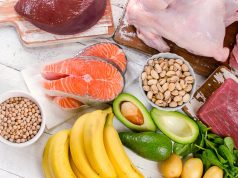In today’s fast-paced world, where energy is a prized commodity, understanding the role of carbohydrates in our diets is more crucial than ever. Whether you’re an athlete striving for peak performance, a busy professional juggling multiple responsibilities, or simply someone seeking to maintain a balanced lifestyle, the right carbohydrates can make all the difference. However, with a plethora of options available, choosing the right ones can be overwhelming. This guide is here to help, offering clear, empathetic advice to navigate the often-confusing world of carbohydrates. By understanding how different types of carbohydrates affect your body and energy levels, you can make informed choices that support your unique lifestyle and goals. Let’s embark on this journey to unlock the potential of carbohydrates as a powerful, yet often misunderstood, source of energy.
Understanding the Role of Carbohydrates in Your Diet
Choosing the right carbohydrates is crucial for maintaining energy levels throughout the day. It’s important to understand that not all carbs are created equal. Some provide a quick burst of energy, while others offer sustained fuel for your body. Complex carbohydrates are your best friends for long-lasting energy. These include whole grains, legumes, and vegetables, which are digested slowly and help maintain stable blood sugar levels. Consider incorporating foods like brown rice, quinoa, and oats into your meals for that enduring boost.
- Whole Grains: Brown rice, quinoa, oats
- Legumes: Lentils, chickpeas, black beans
- Vegetables: Sweet potatoes, broccoli, spinach
On the other hand, simple carbohydrates can be beneficial when you need quick energy, such as before a workout. These are found in fruits, dairy products, and some processed foods. However, it’s best to limit processed simple carbs like candies and sugary drinks, as they can lead to energy crashes. Instead, opt for natural sources like fruits and honey, which also provide essential nutrients and fiber.
| Carbohydrate Type | Examples | Benefit |
|---|---|---|
| Complex Carbs | Whole grains, legumes | Long-lasting energy |
| Simple Carbs | Fruits, honey | Quick energy boost |
Balancing your carbohydrate intake by combining both types can help you stay energized and healthy. Remember to listen to your body and adjust your carb choices based on your daily activities and energy needs. Your diet should be as dynamic as your lifestyle, ensuring you have the right fuel to power through your day.

Identifying High-Energy Carbohydrate Sources
Choosing the right carbohydrates can significantly impact your energy levels throughout the day. To fuel your body effectively, focus on identifying high-energy sources that not only provide a quick boost but also sustain your energy over time. Here are some excellent options to consider:
- Whole Grains: Opt for quinoa, brown rice, and whole wheat bread. These are packed with fiber, which helps maintain steady blood sugar levels.
- Fruits: Bananas, apples, and berries are great choices. They are not only rich in natural sugars but also provide essential vitamins and antioxidants.
- Legumes: Lentils, chickpeas, and beans offer a good mix of complex carbohydrates and proteins, making them a perfect energy source.
To help you better understand the energy content of various carbohydrate sources, here’s a quick comparison:
| Food Item | Calories (per 100g) | Carbohydrates (g) |
|---|---|---|
| Quinoa | 120 | 21 |
| Banana | 89 | 23 |
| Lentils | 116 | 20 |
By incorporating these high-energy carbohydrate sources into your meals, you’ll be able to enhance your stamina and focus, whether you’re tackling a busy workday or an intense workout. Remember, balance is key, and pairing carbohydrates with proteins and fats can optimize your energy levels even further.

Balancing Simple and Complex Carbohydrates for Optimal Energy
When it comes to sustaining energy levels throughout the day, striking the right balance between simple and complex carbohydrates can make all the difference. Simple carbohydrates, found in foods like fruits and honey, are broken down quickly by the body, providing a rapid source of energy. However, this quick energy boost can sometimes lead to a sudden crash, leaving you feeling more tired than before.
On the other hand, complex carbohydrates, present in whole grains and legumes, are digested more slowly, offering a steady release of energy. To maintain optimal energy levels, it’s beneficial to combine both types of carbs in your diet. Here are some suggestions:
- Start your day with whole grains: Oatmeal or whole-grain toast can provide lasting energy to power through your morning.
- Include fruits in your snacks: A banana or an apple can give you a quick energy boost when needed.
- Balance your meals: Combine brown rice or quinoa with vegetables and lean protein for a balanced, energy-sustaining meal.
| Food | Carbohydrate Type | Energy Release |
|---|---|---|
| Whole Wheat Bread | Complex | Slow and Steady |
| Banana | Simple | Quick Boost |
| Quinoa | Complex | Sustained |
| Honey | Simple | Rapid |
By thoughtfully incorporating both simple and complex carbohydrates into your meals and snacks, you can create a diet that supports consistent energy levels throughout the day. Remember, it’s not just about choosing the right carbs but also about timing their intake to align with your daily activities and energy needs.

Practical Tips for Incorporating the Right Carbs into Your Meals
Choosing the right carbohydrates can feel like navigating a maze, but it doesn’t have to be complicated. Start by focusing on whole grains, which are less processed and retain more nutrients compared to their refined counterparts. Think brown rice, quinoa, and whole wheat pasta. These options not only provide sustained energy but also contribute to your daily fiber intake, promoting better digestion and a feeling of fullness.
- Swap white bread for whole grain or sprouted bread.
- Choose oatmeal over sugary cereals for breakfast.
- Incorporate legumes like lentils and chickpeas into salads and soups.
Consider adding a variety of fruits and vegetables to your meals, as they are naturally rich in carbohydrates along with essential vitamins and minerals. Aim for a colorful plate with items like sweet potatoes, squash, berries, and leafy greens. These foods not only boost your energy levels but also support overall health. Here’s a quick comparison to guide your choices:
| Carb Source | Benefits |
|---|---|
| Sweet Potatoes | High in fiber and Vitamin A |
| Quinoa | Complete protein with all essential amino acids |
| Berries | Rich in antioxidants |
When planning meals, remember that balance is key. Pairing carbs with healthy fats and proteins can help stabilize blood sugar levels and prolong energy release. Consider adding a sprinkle of nuts or seeds, a dollop of hummus, or a slice of avocado to your dishes. By thoughtfully incorporating these elements, you’ll harness the full potential of carbohydrates to fuel your day.








































